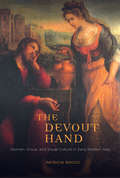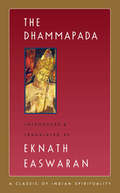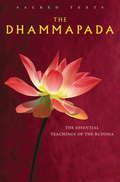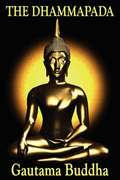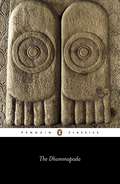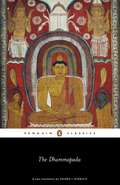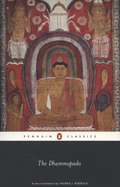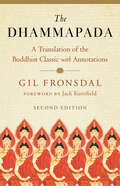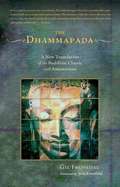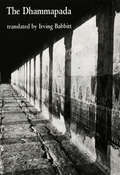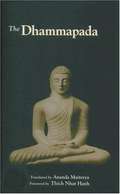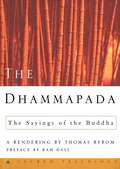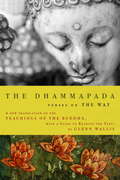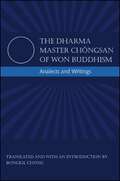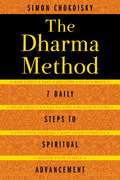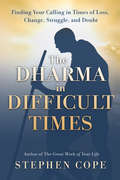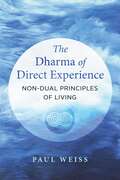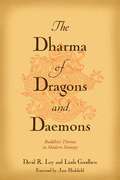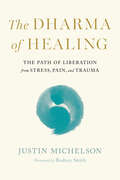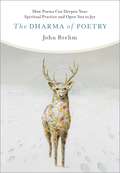- Table View
- List View
The Devout Hand: Women, Virtue, and Visual Culture in Early Modern Italy
by Patricia RoccoAfter the Counter-Reformation, the Papal State of Bologna became a hub for the flourishing of female artistic talent. The eighteenth-century biographer Luigi Crespi recorded over twenty-eight women artists working in the city, although many of these, until recently, were ignored by modern art criticism, despite the fame they attained during their lifetimes. What were the factors that contributed to Bologna’s unique confluence of women with art, science, and religion? The Devout Hand explores the work of two generations of Italian women artists in Bologna, from Lavinia Fontana (1552–1614), whose career emerged during the aftermath of the Counter Reformation, to her brilliant successor, Elisabetta Sirani (1638–1665), who organized the first school for women artists. Patricia Rocco further sheds light on Sirani’s students and colleagues, including the little-known engraver Veronica Fontana and the innovative but understudied etcher Giuseppe Maria Mitelli. Combining analysis of iconography, patronage, gender, and reception studies, Rocco integrates painting, popular prints, book illustration, and embroidery to open a wider lens onto the relationship between women, virtue, and the visual arts during a period of religious crisis and reform. A reminder of the lasting power of images, The Devout Hand highlights women’s active role in sixteenth- and seventeenth-century Christian reform and artistic production.
The Dhammapada
by Eknath EaswaranDhammapada means "the path of dharma," the path of truth, harmony, and righteousness. Eknath Easwaran's translation of this essential Buddhist text, based on the oldest version, consists of 423 short verses gathered by the Buddha's direct disciples after his death and organized by theme: anger, thought, joy, pleasure, and others. The Buddha's timeless teachings take the form of vivid metaphors from everyday life and are well served by Easwaran's lucid translation. An authoritative introduction and chapter notes offer helpful context for modern readers.
The Dhammapada
by Gautama BuddhaHere are the words of the Buddha himself, setting forth his core beliefs. This books leads us to the spiritual path to the supreme Truth. Here is the guide to the Nirvana. This books is the most important document of the Buddhism religion. Experience all 423 verses of the Buddha and discover the essence of enlightenment.
The Dhammapada
by Juan MascaroThe Dhammapada is a collection of aphorisms that illustrate the moral teachings of Buddha - the spiritual path to the supreme Truth. Probably compiled in the third century BCE, the verses are arranged according to theme, covering ideas such as self-possession, good and evil, watchfulness and endurance. Together they describe how an individual can attain the enlightenment of Nirvana, the supreme goal of Buddhism. The road to Nirvana, as illustrated in The Dhammapada, is narrow and difficult to negotiate, but the reward of eternal life gives hope and determination to the traveller.
The Dhammapada
by Valerie J. RoebuckOne of the best-known and best-loved works of Buddhist literature, the Dhammapada forms part of the oldest surviving body of Buddhist writings, and is traditionally regarded as the authentic teachings of the Buddha himself, spoken by him in his lifetime, and memorized and handed on by his followers after his death. A collection of simple verses gathered in themes such as 'awareness', 'fools' and 'old age', the Dhammapada is accessible, instructional and mind-clearing, with lessons in each verse to give ethical advice and to remind the listener of the transience of life.Valerie Roebuck's new translation is accompanied by an introduction examining the language of the Dhammapada, its status as literature and the school of Buddhist teaching from which it comes.
The Dhammapada (Penguin Classics)
by Valerie RoebuckOne of the best-known and best-loved works of Buddhist literature, the Dhammapada forms part of the oldest surviving body of Buddhist writings, and is traditionally regarded as the authentic teachings of the Buddha himself, spoken by him in his lifetime, and memorized and handed on by his followers after his death. A collection of simple verses gathered in themes such as 'awareness', 'fools' and 'old age', the Dhammapada is accessible, instructional and mind-clearing, with lessons in each verse to give ethical advice and to remind the listener of the transience of life.
The Dhammapada: A New Translation of the Buddhist Classic with Annotations (Buddhism Ser.)
by Gil FronsdalThe Dhammapada is the most widely read Buddhist scripture in existence, enjoyed by both Buddhists and non-Buddhists. This classic text of teaching verses from the earliest period of Buddhism in India conveys the philosophical and practical foundations of the Buddhist tradition. The text presents two distinct goals for leading a spiritual life: the first is attaining happiness in this life (or in future lives); the second goal is the achievement of spiritual liberation, freedom, absolute peace. Many of the key themes of the verses are presented in dichotomies or pairs, for example, grief and suffering versus joy; developing the mind instead of being negligent about one's mental attitude and conduct; virtuous action versus misconduct; and being truthful versus being deceitful. The purpose of these contrasts is, very simply, to describe the difference between what leads to desirable outcomes and what does not. For centuries, this text has been studied in its original Pali, the canonical language of Buddhism in Southeast Asia. This fresh new translation from Insight Mediation teacher and Pail translator Gil Fronsdal is both highly readable and scholarly authoritative. With extensive explanatory notes, this edition combines a rigorous attention to detail in bringing forth the original text with the translator's personal knowledge of the Buddhist path. It is the first truly accurate and highly readable translation of this text to be published in English.
The Dhammapada: A New Translation of the Buddhist Classic with Annotations, First Edition
by Gil FronsdalThe Dhammapada is the most revered sacred text in Buddhism, often attributed to Buddha himself, and conveying the fundamental meaning of the religion. Gil Fronsdal has made a new translation, giving fresh meaning to the verses.
The Dhammapada: A Translation of the Buddhist Classic with Annotations
by Gil FronsdalThe Dhammapada is the most widely read Buddhist scripture in existence, enjoyed by both Buddhists and non-Buddhists. This classic text of teaching verses from the earliest period of Buddhism in India conveys the philosophical and practical foundations of the Buddhist tradition. The text presents two distinct goals for leading a spiritual life: the first is attaining happiness in this life (or in future lives); the second goal is the achievement of spiritual liberation, freedom, absolute peace. Many of the key themes of the verses are presented in dichotomies or pairs, for example, grief and suffering versus joy; developing the mind instead of being negligent about one's mental attitude and conduct; virtuous action versus misconduct; and being truthful versus being deceitful. The purpose of these contrasts is, very simply, to describe the difference between what leads to desirable outcomes and what does not. For centuries, this text has been studied in its original Pali, the canonical language of Buddhism in Southeast Asia. This fresh new translation from Insight Mediation teacher and Pail translator Gil Fronsdal is both highly readable and scholarly authoritative. With extensive explanatory notes, this edition combines a rigorous attention to detail in bringing forth the original text with the translator's personal knowledge of the Buddhist path. It is the first truly accurate and highly readable translation of this text to be published in English.
The Dhammapada: Buddhist philosophy
by G. BuddhaThe 423 verses in the collection known as The Dhammapada (pada: "the way"; dhamma: "the teaching"; hence, "The Path of Truth") are attributed to the Buddha himself and form the essence of the ethics of Buddhist philosophy. There are a number of English translations of The Dhammapada, but this version by Irving Babbitt, for many years professor at Harvard and founder, with Paul Elmer More, of the movement known as "New Humanism," concentrates on the profound poetic quality of the verses and conveys, perhaps more than any other, much of the vitality of the original Pali text. Babbitt devoted many years to this translation--it was a labor of love. Together with his essay on "Buddha and the Occident," which is also included in this edition, The Dhammapada was one of the basic components of his view of world history, a view which has influenced leaders of thought as diverse as Newton Arvin, Walter Lippmann, David Riesman and T. S. Eliot. Eliot, indeed, once wrote that "to have been a student of Babbitt's is to remain always in that position."
The Dhammapada: The Path of Truth
by Balangoda Ananda MaitreyaThe Dhammapada is often characterized as the most representative example of the teachings of the Buddha. It provides, beautifully and simply, a key to the fundamentals of early Buddhist philosophy and has been translated from the original Pali into more languages than any other Buddhist text. <P><P>The message of the Dhammapada is relevant to our time. It points to a way of life and attitudes that emphasize harmony and oneness with all living beings. Its message of right action is timeless as well as timely, reflecting the spirit of the Buddha's teaching method, and speaks to the perfectibility of humankind and to the scientific impeccability of the law of cause and effect. <P><P>This version of the Dhammapada has been derived from the translation by one of the most highly regarded teachers in the Theravada Buddhist world, The Most Venerable Aggamahapandita Balangoda Ananda Maitreya, Mahanayaka Thera.
The Dhammapada: The Sayings of the Buddha
by Ram Dass Buddha Thomas ByromTrembling and quivering is the mind,Difficult to guard and hard to restrain.The person of wisdom sets it straight,As a fletcher does an arrow.The Dhammapada introduced the actual utterances of the Buddha nearly twenty-five hundred years ago, when the master teacher emerged from his long silence to illuminate for his followers the substance of humankind's deepest and most abiding concerns. The nature of the self, the value of relationships, the importance of moment-to-moment awareness, the destructiveness of anger, the suffering that attends attachment, the ambiguity of the earth's beauty, the inevitability of aging, the certainty of death-these dilemmas preoccupy us today as they did centuries ago. No other spiritual texts speak about them more clearly and profoundly than does the Dhammapada.In this elegant new translation, Sanskrit scholar Glenn Wallis has exclusively referred to and quoted from the canonical suttas-the presumed earliest discourses of the Buddha-to bring us the heartwood of Buddhism, words as compelling today as when the Buddha first spoke them. On violence: All tremble before violence./ All fear death./ Having done the same yourself,/ you should neither harm nor kill. On ignorance: An uninstructed person/ ages like an ox,/ his bulk increases,/ his insight does not. On skillfulness: A person is not skilled/ just because he talks a lot./ Peaceful, friendly, secure-/ that one is called "skilled."In 423 verses gathered by subject into chapters, the editor offers us a distillation of core Buddhist teachings that constitutes a prescription for enlightened living, even in the twenty-first century. He also includes a brilliantly informative guide to the verses-a chapter-by-chapter explication that greatly enhances our understanding of them. The text, at every turn, points to practical applications that lead to freedom from fear and suffering, toward the human state of spiritual virtuosity known as awakening.Glenn Wallis's translation is an inspired successor to earlier versions of the suttas. Even those readers who are well acquainted with the Dhammapada will be enriched by this fresh encounter with a classic textFrom the Hardcover edition.
The Dhammapada: Verses on the Way (Modern Library Classics #Vol. 12)
by Buddha Glenn WallisTrembling and quivering is the mind,Difficult to guard and hard to restrain.The person of wisdom sets it straight,As a fletcher does an arrow.The Dhammapada introduced the actual utterances of the Buddha nearly twenty-five hundred years ago, when the master teacher emerged from his long silence to illuminate for his followers the substance of humankind's deepest and most abiding concerns. The nature of the self, the value of relationships, the importance of moment-to-moment awareness, the destructiveness of anger, the suffering that attends attachment, the ambiguity of the earth's beauty, the inevitability of aging, the certainty of death-these dilemmas preoccupy us today as they did centuries ago. No other spiritual texts speak about them more clearly and profoundly than does the Dhammapada.In this elegant new translation, Sanskrit scholar Glenn Wallis has exclusively referred to and quoted from the canonical suttas-the presumed earliest discourses of the Buddha-to bring us the heartwood of Buddhism, words as compelling today as when the Buddha first spoke them. On violence: All tremble before violence./ All fear death./ Having done the same yourself,/ you should neither harm nor kill. On ignorance: An uninstructed person/ ages like an ox,/ his bulk increases,/ his insight does not. On skillfulness: A person is not skilled/ just because he talks a lot./ Peaceful, friendly, secure-/ that one is called "skilled."In 423 verses gathered by subject into chapters, the editor offers us a distillation of core Buddhist teachings that constitutes a prescription for enlightened living, even in the twenty-first century. He also includes a brilliantly informative guide to the verses-a chapter-by-chapter explication that greatly enhances our understanding of them. The text, at every turn, points to practical applications that lead to freedom from fear and suffering, toward the human state of spiritual virtuosity known as awakening.Glenn Wallis's translation is an inspired successor to earlier versions of the suttas. Even those readers who are well acquainted with the Dhammapada will be enriched by this fresh encounter with a classic textFrom the Hardcover edition.
The Dharma Master Chǒngsan of Won Buddhism: Analects and Writings (SUNY series in Korean Studies)
by ChongsanWon Buddhism emerged in early twentieth-century Korea after a long period of anti-Buddhist repression. It is a syncretic tradition, a form of Buddhism strongly influenced by the Chŏson dynasty's Neo-Confucian ethical heritage and by Daoism. Seeking to deliver sentient beings from suffering and to create a just and ethical world, Won Buddhism stresses practical application of the dharma and service. It offers a vision of people as one family, morally perfected.This book provides the first English translations of the writings of Chŏngsan (1900–62), the second dharma master of Won Buddhism, who codified the new religion's central doctrines. The translations here include Chŏngsan's discussion of Buddha-nature, described as a mind-seal and symbolized by the Irwŏnsang (a unitary circle); his synthesis of Confucian moral and political programs with Buddhist notions of emancipation from birth and death; and his expositions on realizing the ideal of all people as one family.
The Dharma Method: 7 Daily Steps to Spiritual Advancement
by Simon ChokoiskyA practical guide to simple daily techniques for rapid spiritual progress • Explores 11 time-tested methods for spiritual advancement and how you only need to include 7 each day for spiritual growth and personal enlightenment • Includes wisdom from spiritual masters from nearly every religion, including Christianity, Buddhism, Hinduism, and more • Offers routines, tips, and tricks to keep you on track, mantras for success and sacred connection, and exercises to apply these spiritual lessons in your everyday life Enlightenment means becoming a light unto yourself. But how does one get on the path to enlightenment? In this practical spiritual guide, Simon Chokoisky shares 11 time-tested yet simple daily techniques to help you find your spiritual path, or “dharma,” no matter what your spiritual background--be it Christian, Hindu, Buddhist, or Agnostic. He explains how everyone has a unique learning style as well as a spiritual style--your “Dharma type”--and how the Dharma method allows you to pick any seven of the 11 methods described in the book to practice. You can even change them daily, all based on your unique needs. And by holding to the 7/11 “rule” daily, you’ll soon find yourself on the road to rapid spiritual progress and personal enlightenment. In this book, the author explains how he distilled these 11 spiritual techniques from centuries of methods used by spiritual masters from around the world. He details the 5 different Dharma types and provides personality tests to determine your type. He provides routines, tips, and tricks to keep you on track as well as thoughtful exercises to help you apply spiritual principles in your everyday life. He explores how to apply the commandments of the Judeo-Christian tradition, the Yoga Yamas and Niyamas, and the Buddhist 8-fold path based on your Dharma type. He discusses the power of sound and how to use mantras for success and sacred connection. He also explains the best ways to purify your body and mind as well as how to create a “standing wave” of spiritual power to recharge yourself anytime during the day. Showing how spirituality is inherent in each of us and is abundant, free, and easy to cultivate, the author reveals how you can best cultivate your spiritual light and share it with the world.
The Dharma in Difficult Times: Finding Your Calling in Times of Loss, Change, Struggle, and Doubt
by Stephen CopeThe best-selling author of The Great Work of Your Life shows us the way through our darkest times to our truest calling.How do we make sense of our lives when our world seems to be falling apart? In this beautifully written guide, scholar and teacher Stephen Cope shows that crises don&’t have to derail us from our purpose—they can actually help us to find our purpose and step forward as our best selves. The Dharma in Difficult Times extends the message of Cope&’s best-loved book, The Great Work of Your Life, which gave readers a roadmap for the journey to their true calling. As in Great Work, Cope here takes the ancient yogic text the Bhagavad Gita—the epic narrative of the warrior Arjuna&’s odyssey of self-discovery—as a model for the reader&’s journey. Then he builds on that foundation using the stories and teachings of famous figures, as well as stories of ordinary people and his own rich personal experience. Along the way, we find striking examples for finding meaning and purpose in our lives: • Gandhi shows how to tap our spiritual resources and listen for our inner voice • Sojourner Truth and Henry David Thoreau inspire us to seek out the unmistakable signs of dharma in the midst of chaos • Marian Anderson and Ruby Sales shed light on dharma&’s mystic power and how we learn to trust in it • And more In the spirit of Pema Chödrön&’s When Things Fall Apart, this book is required reading when you find yourself forging a path through crisis—or seeking a way through your darkest times to your truest self.
The Dharma of Direct Experience: Non-Dual Principles of Living
by Paul Weiss• Examines the direct perception of non-dual reality and shows its implications for navigating ordinary reality in an open, compassionate, and ever-maturing way• Shares the author&’s most significant awakening experiences and explores their psycho-emotional and psychospiritual foundations• Offers practical teachings for spiritual understanding, emotional development, and the cultivation of compassionExploring the direct perception of non-dual, &“non-ordinary&” reality, Paul Weiss shares guidance for navigating ordinary reality in an open, compassionate, and ever-maturing way. He affirms our shared human potential for the &“direct experience&” of reality--unmediated by our more relativistic mental faculties--and reveals this experience as an essential dimension of our conscious capacity for growth. He shares his most significant awakening experiences and the circumstances leading up to them, exploring the personal and transpersonal dimensions of the experiences and their psycho-emotional and psycho- spiritual foundations. He points to such experiences as part of our ongoing integration as human beings and the essential path of practice that supports our availability to them. Interweaving perspectives from psychology and neuroscience with important lessons from spiritual traditions around the world, Weiss explores how to live a life of integrity, reciprocity, and openness to reality, offering practical teachings for spiritual understanding, emotional development, and the cultivation of compassion, viewed by ancient Buddhist sages as the true meaning of existence. He addresses such human qualities as vulnerability, empathy, reciprocity, openness, and intimacy and shows how they express and participate in deeper conscious truths. The author also examines practical wisdom teachings within both Buddhist and Christian paths to realization.Combining engaged mysticism with transcendent humanism, along with thought- provoking poetry, Weiss offers a living vision of a non-dual way of experiencing the world, a path that supports our functional, emotional, and spiritual maturity.
The Dharma of Dragons and Daemons: Buddhist Themes in Modern Fantasy
by David R. Loy Linda Goodhew Jane HirshfieldIn order to live, we need air, water, food, shelter...and stories. This book is about Buddhist stories: not about stories to be found in Buddhism, but about the "Buddhism" to be found in some of the classics of contemporary fantasy including the works of J. R. R. Tolkien, Hayao Miyazaki, Michael Ende, Philip Pullman, and Ursula K. LeGuin.Many books are called groundbreaking, but this one is truly unique and sure to appeal to anyone with an interest in fantasy literature. It employs a Buddhist perspective to appreciate some of the major works of modern fantasy--and uses modern fantasy fiction to elucidate Buddhist teachings. In the tradition of David Loy's cutting-edge presentation of a Buddhist social theory in The Great Awakening, this pioneering work of Buddhist literary analysis, renown scholar David Loy and Linda Goodhew offer ways of reading modern fantasy-genre fiction that illuminate both the stories themselves, and the universal qualities of Buddhist teachings. Authors examined include J.R.R. Tolkien, Philip Pullman (of The Amber Spyglass trilogy, from whose works the word "daemon" is borrowed in the title), Ursula K. LeGuin, and the anime movie Princess Mononoke.
The Dharma of Healing: The Path of Liberation from Stress, Pain, and Trauma
by Justin Michelson"...Both a refuge and a roadmap, this book illuminates the boundless love and wisdom that lies within each of us, waiting to be uncovered and shared."–Tara Brach, author of Radical Compassion A handbook for spiritual freedom in an age of global crisis.The world is in turmoil because of its trauma. Our unhealed psychological wounds block our innate expressions of wisdom and compassion, setting the stage for ongoing conflict, division, and stress. Our fate, both individual and collective, lies in our capacity to heal emotionally and spiritually—and for that, we need to remember the power, resilience, and essential goodness of our own hearts. This book is for anyone that wants to: Discover the root cause of their suffering and the key principles to heal it.Transform challenging emotions and deepen spiritual insight with simple and intuitive techniques.Integrate these skills and understandings back into relationships and work in the world.In The Dharma of Healing, Justin Michelson walks readers through an ingeniously simple approach to healing and spiritual insight using a unique and powerful form of self-compassion rooted in Buddhist wisdom. With 39 guided meditations that systematically lead readers through a comprehensive inner journey, Michelson provides everything that&’s needed to confidently walk the path of healing ourselves. Synergizing modern styles of emotional work with timeless spiritual practices, he shows how we can recognize painful emotions, transform difficult feelings into positive forces in our lives, and find our spiritual home within. The Dharma of Healing is an essential guide for anyone who longs for inner peace in a world that is so rarely peaceful.
The Dharma of Poetry: How Poems Can Deepen Your Spiritual Practice and Open You to Joy
by John BrehmDiscover how to engage with poetry to support your spiritual practice, leading to more mindfulness, equanimity, and joy.Discover how engaging with poetry can support your spiritual practice—and lead you to more mindfulness and joy. In The Dharma of Poetry, John Brehm shows us how poems can be a source of wisdom and an entry into spiritual practice. He helps us understand how poems open up new ways of thinking, feeling, and being in the world that anyone engaged in spiritual practice—or wishing to live a more mindful life—might want to emulate. Brehm holds open the practice of mindfully entering a poem, with an alertness, curiosity, and open-hearted responsiveness that is very much like the attention we cultivate in meditation. A standalone book that also serves as a companion to the author&’s acclaimed anthology, The Poetry of Impermanence, Mindfulness, and Joy, this collection of lively, elegantly written essays offers in-depth explorations of twenty remarkable poems. It also offers poetry-related meditations and writing prompts that invite readers to directly engage with the poems and ideas discussed in the book, and expand their own practice of poetry. Additional resources include an essay titled &“How to Lead a Poetry and Dharma Discussion&” and a list of poetry resources for further exploration.
The Dharma of Star Wars
by Matthew BortolinPlumbing the Star Wars universe for spiritual lessons is as old as the first Star Wars film released in 1977. The author of this book looks through a specifically Buddhist lens, using Buddhist philosophy to interpret the characters, plots, and dialogue.
The Dharma of The Princess Bride: What the Coolest Fairy Tale of Our Time Can Teach Us About Buddhism and Relationships
by Ethan NichternAn engagingly contemporary approach to Buddhism—through the lens of an iconic film and its memorable charactersHumorous yet spiritually rigorous in the tradition of Zen and the Art of Motorcycle Maintenance and The Tao of Pooh, drawing from pop culture and from personal experience, The Dharma of “The Princess Bride” teaches us how to understand and navigate our most important personal relationships from a twenty-first-century Buddhist perspective.Friendship. Romance. Family. These are the three areas Ethan Nichtern delves into, taking as departure points the indelible characters from Rob Reiner’s perennially popular film—Westley, Fezzik, Vizzini, Count Rugen, Princess Buttercup, and others—as he also draws lessons from his own life and his work as a meditation teacher. Nichtern devotes the first section of the book to exploring the dynamics of friendship. Why do people become friends? What can we learn from the sufferings of Inigo Montoya and Fezzik? Next, he leads us through all the phases of illusion and disillusion we encounter in our romantic pursuits, providing a healthy dose of lightheartedness along the way by sharing his own Princess Buttercup List and the vicissitudes of his dating life as he ponders how we idealize and objectify romantic love. Finally, Nichtern draws upon the demands of his own family history and the film’s character the Grandson to explore the dynamics of “the last frontier of awakening,” a reference to his teacher Chogyam Trungpa’s claim that it’s possible to be enlightened everywhere except around your family. With The Dharma of “The Princess Bride” in hand, we can set out on the path to contemporary Buddhist enlightenment with the most important relationships in our lives.
